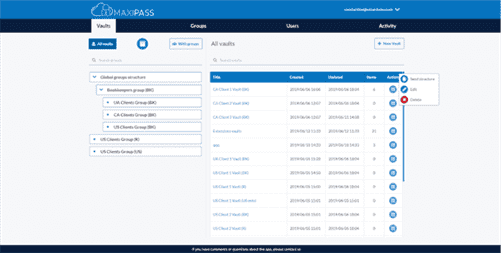It is a set of standard steps that are required to be followed in order to develop and deliver software or any type of software-based system or application. This blog will look at the different types of software development life cycles and how they are different. Rapid application development (RAD) is a software development (or systems-development) methodology that focuses less on planning and incorporating changes on an ongoing basis. RAD focuses on quickly building a working model of the software or system, getting feedback from users, and updating the working model.

SB defines all tasks that developers undertake to complete during a particular sprint. Verification and validation mean different things, though they seem pretty similar. The goal of verification is to determine whether the software is consistent with the initial technical requirements. Validation, in turn, should confirm whether the product corresponds to the business needs, whether it serves its intended purpose, whether it acts as planned.
Implementation and Integration Stage
As each iteration of the project is released, the statistics and feedback gathered are used to determine the requirements. The lean methodology works best in an entrepreneurial environment where a company is interested in determining if their idea for a software application is worth developing. In a DevOps model, Developers and Operations teams work together closely — and sometimes as one team — to accelerate innovation and the deployment of higher-quality and more reliable software products and functionalities. Discipline, continuous feedback and process improvement, and automation of manual development processes are all hallmarks of the DevOps model. It enables development teams to build a highly customized product and incorporate user feedback early on. Each iteration starts by looking ahead to potential risks and figuring out how best to avoid or mitigate them.
- In short, the iterative and incremental model works through multiple, repeated, and incremental cycles so developers can pinpoint which areas to improve based on previous deployments of the software.
- All the different technical questions that may appear at this stage are discussed by all the stakeholders, including the customer.
- Based on the design specifications, developers write code, create database structures, and implement necessary functionalities.
- Project teams working on the Lean model aim at finding opportunities to cut waste at every step of the SDLC process.
- Developers may face some pitfalls if they aren’t familiarized enough with the Agile methodology.
- This means, among other things, that data and components from the old system must be moved to the new system.
- Allocate System RequirementsAllocate the system requirements to the elements of the system architectural design.
A) Linking the needs of the end-users to the system, system elements, and enabling system elements to be designed and developed. Business analyst and Project organizer set up a meeting with the client to gather all the data like what the customer wants to build, who will be the end user, what is the objective of the product. Before creating a product, a core understanding or knowledge of the product is very necessary. In System Development Life Cycle (SDLC), prototypes are created before actual development begins, in order to test the final product. In order to deliver working software, with the minimum amount of documentation, the requirements and design of the app can be flexible and adaptable to changing user needs. Each iteration of the prototype is represented as a cycle in the spiral.
Waterfall Software Development Life Cycle
Following the best practices and/or stages of SDLC ensures the process works in a smooth, efficient, and productive way. Toolshero supports people worldwide (10+ million visitors from 100+ countries) to empower themselves through an easily accessible and high-quality learning platform for personal and professional development. An existing system is replaced by a new system that consists of replaced components or modules to ensure that it meets new requirements.
This article will explain how SDLC works, dive deeper in each of the phases, and provide you with examples to get a better understanding of each phase. To understand the SDLC-concept, the term system needs to be defined. A system is, at the very least, a component, and possibly a combination of various components of information technology. You needn’t worry any longer as the search for answers to the latest security issues is over. Learn how embracing the benefits of single delivery platform will help protect your business.
Project Managing the System Development Life Cycle
These included planning, creating, developing, testing, and deploying. Note that it left out the major stages of analysis and maintenance. Systems analysis and design (SAD) can be considered a meta-development activity, which serves to set the stage and bound the problem. SAD interacts with distributed enterprise architecture, enterprise I.T. Architecture, and business architecture, and relies heavily on concepts such as partitioning, interfaces, personae and roles, and deployment/operational modeling to arrive at a high-level system description.
System Design is a crucial stage in the SDLC as it bridges the gap between requirements analysis and system development. It transforms user needs and functional specifications into a detailed technical plan that guides the development team. Proper system design ensures that the developed system aligns with the desired functionality, performance, and scalability requirements. This stage involves deploying the developed system into the production environment. This includes activities such as system installation, data migration, training end-users, and configuring necessary infrastructure.
What Is the Software Development Life Cycle? SDLC Explained
The development of an e-commerce website for an online retailer would be an example of a project that could use the Incremental Model. In order for the V Model to be effective, the requirements must be well defined and stable, and they must be separated into phases for development and testing. The rigorous testing process ensures that the software meets the needs of stakeholders and end users, so it is also well suited for projects where a high level of quality is required.
Each system goes through a development life cycle from initial planning through to disposition. This stage includes the development of detailed designs that brings initial design work into a completed form of specifications. This work includes the specification of interfaces between the system and its intended environment, and a comprehensive evaluation type of system development life cycle of the systems logistical, maintenance and support requirements. The detail design and development is responsible for producing the product, process and material specifications and may result in substantial changes to the development specification. Because this phase includes coding, it is the most important phase of the SDLC for the developer team.
Information System: Intro. & Development Life Cycle
Different models were created during the SDLC evolution to meet a wide variety of development requirements and expectations. Nowadays, the world is moving towards flexibility instead of excessive regularity and orderliness. Still, agile approaches perfectly combine responsiveness and well-organized project management. So, if support and maintenance are entirely entrusted to the software development provider, this process doesn’t have timeframes.

So for example, if we gathered a wrong requirement, this means that we will create a wrong design and of course a wrong code to implement this requirement. In this case, if we detect the defect in the code while we are performing the testing activity, we will have to repeat the whole process again “correct the requirement, correct the design, then correct the code”. This is why another software development model is invented which is the V-model. In the V-model, for each development activity, there is a corresponding test activity.
Advantages and disadvantages of SDLC
They did not have a proper concept of what the possibilities would be on the short term. Again, since SDLCs utilize extensive paperwork and guideline documents, it’s a team effort and losing https://www.globalcloudteam.com/ one even major member will not jeopardize the project timeline. Furthermore, developers are responsible for implementing any changes that the software might need after deployment.